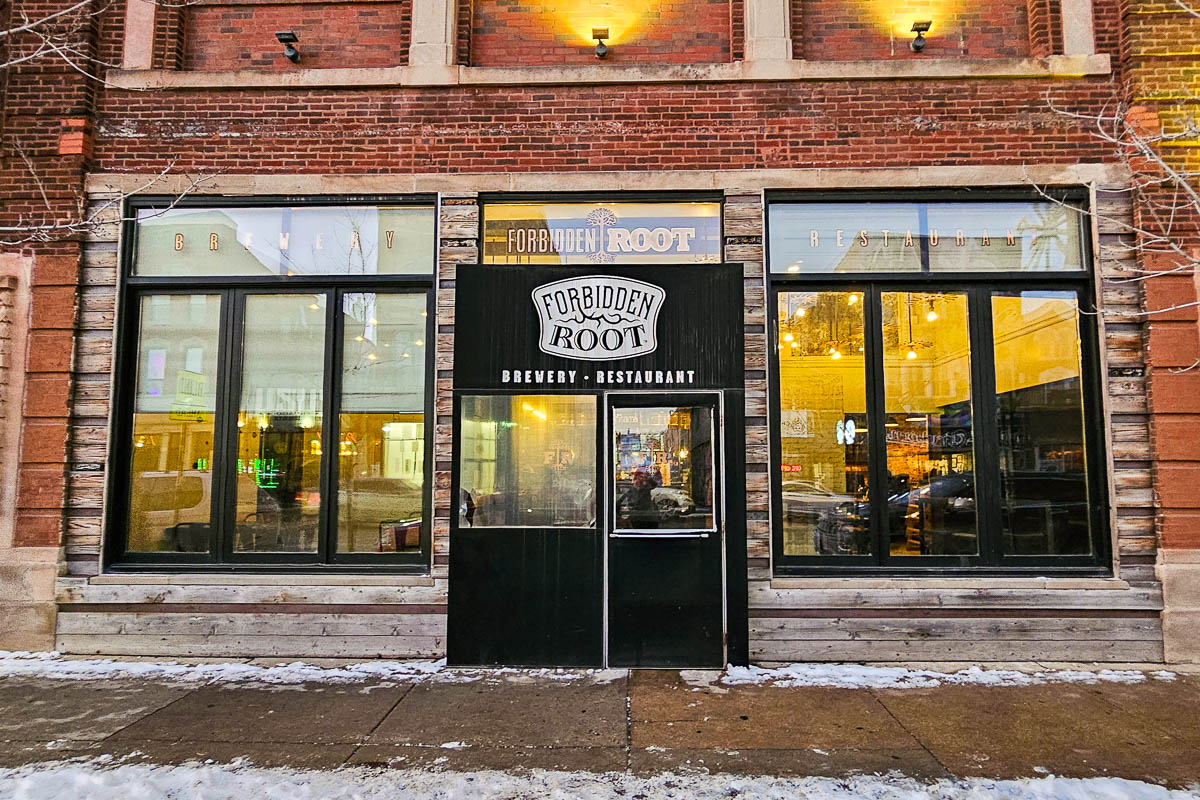Welcome to stop #99 on the Brews and Choos project.
Brewery: Forbidden Root, 1746 W. Chicago Ave., Chicago
Train line: CTA Blue Line, Chicago
Time from Chicago: 8 minutes
Distance from station: 1.1 km

After visiting three breweries on Saturday and having less than a full pint of beer at each, by 5pm we had worked up an appetite for food and for more than a couple sips of beer. So we walked the whole 800 meters from On Tour to Forbidden Root's first restaurant and brewery. (They also own Cultivate, in the Ravenswood Beer Corridor near Inner Drive Technology World HQ.)
Even before the beers, we ordered some beer cheese, which really hit the spot. I don't mean Merkt's out of the plastic container; this is hand-made whipped aged cheddar with a hint of beer and a spicy maple drizzle. On tasting that we also ordered some burrata, with pesto, tomato jam, parmesan chips, and Focaccia.

And then we tried some beers, still keeping our heads clear by sharing 150 mL pours, which worked all the way up until the last one.
The Halfway to Crazy West Coast IPA (6.2%) was halfway to piney, with some fruit, note and a clean, bitter finish that I enjoyed. The Snoochie Boochies double IPA (8%) really hop-slammed me; I noted its "strong, complex, interesting, fruity" flavors but also jotted down "caution required."
But then we tried the Call Your Mom Bourbon barrel-aged Imperial stout (12.9%). I wrote: "mmmmmmm. Chocolate, toffee, vanilla, all the good things. Yum!" And half an hour later, in the Lyft home, I just wanted to go to sleep. But I also would love to try that beer again, and I regret not taking a bottle home.
Finishing the day at Forbidden Root was exactly the correct choice.
Beer garden? No
Dogs OK? No
Televisions? None
Serves food? Full menu
Would hang out with a book? Maybe
Would hang out with friends? Yes
Would go back? Yes